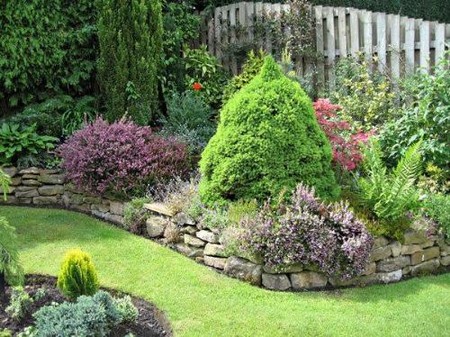Best Way to Improve Your Garden in a quick Way
If your garden is neat and tidy, it will generally create a good first impression. On the other hand, signs of neglect – such as an unkempt lawn with broken edges -immediately spoil the effect. Here are a few quick fixes.
Lawns – broken edges: Where an edge has been damaged, place a piece of wood 20-23cm wide, 30cm long and 6-12mm thick over the damaged area and with the short side flush with the lawn’s edge. Use an edging-iron (also known as an edging-knife) to cut around the board. Then, cut evenly under it with a spade. Lift out the complete turf and reverse it, so that the damaged area faces inwards. Firm the turf and fill and firm the broken part with compost; sprinkle with grass seed, rake level and gently water.
Lawns – holes in the turf: These immediately detract from a lawn’s appearance, but can be quickly levelled. Place a piece of wood about 23cm (9m) square and 6-12mm thick over the hole and use an edging-iron to cut around it. Use a spade to remove the piece of turf. Then, use the same piece of wood to cut a fresh, undamaged piece of turf from an out-of-the-way position; place it in the hole and check that it is level. Firm it and trickle compost into the cracks. Thoroughly water the entire area.
Lawns – hollows and bumps: If not more than 1.2m (4ft) across, these can be easily levelled. Stretch a garden line over the centre of the depression or mound and use an edging-iron to cut the turf to about 5cm deep. Then, measure 30cm wide strips at right-angles to the base line and cut along them. Cut under the turves with a spade and roll them back. Remove or add compost to level the surface, then roll back the turves. Firm them, trickle compost between the joints and water the entire area.
Fences – broken posts: Where posts have rotted at ground level, dig out the decayed part and position a concrete spur so that it rests against the top part of the post. Check it is upright, drill the wooden post and bolt it to the concrete spur. Secure the post upright, ram hardcore around the spur’s base and then add concrete.
Fences – broken arris rail: Where one of these rails rots at the position it joins a supporting post, install a proprietary galvanized bracket. Use galvanized screws to secure it.
Paths – broken and badly positioned: Any path’s surface will eventually deteriorate with age and its foundations will crumble. When this happens, it presents a golden opportunity to remove the path entirely and to create an entirely different garden, perhaps with a more open aspect and a larger, uninterrupted lawn for children to play on. There are few changes you can make in the garden that can have such a far-reaching effect on its entire visual perspective.
Retaining walls: If your new garden has an old, dilapidated retaining wall that would involve a lot of work to repair and improve, consider removing it entirely and forming a steep, grassy bank in its place. It will not take long for the grass to establish itself, and extra spring interest can be created by planting daffodil bulbs, together with polyanthus, all over the bank.
Hover mowers, as well as strimmers, are ideal for cutting grassy banks, but be sure to round off the top edge of your bank as otherwise the mower’s blade will shave off the turf and create unattractive bare patches.
Steps: Steps can play an important visual role in the garden, as well as being essentially functional by nature. There are numerous different materials to choose from, not all of them necessarily that expensive. Sometimes, flights of steps can be made more attractive by laying extra paving slabs at the top and bottom, to create an ‘entrance and exit’ to the flight. Make these areas wider than the width of the steps themselves, so that plants in pots and tubs can be placed on them for added decoration.
Categories
Advertisements
Recent Articles
 How to Understand Bed Sizes – A Small Guide
How to Understand Bed Sizes – A Small Guide How to Select Some Must Have Kitchen Accessories
How to Select Some Must Have Kitchen Accessories Best Way to Change a Car Tire
Best Way to Change a Car Tire Best Way to Write an Affirmation
Best Way to Write an Affirmation Best Way to Take Charge of Your Financial Life
Best Way to Take Charge of Your Financial Life Best Way to Survive a Party When You Don’t Know Anyone
Best Way to Survive a Party When You Don’t Know Anyone Best Way to Stop Self Sabotaging Yourself
Best Way to Stop Self Sabotaging Yourself Best Way to Start Journal Writing
Best Way to Start Journal Writing Best Way to Speak with a Powerful Voice
Best Way to Speak with a Powerful Voice Best Way to Simplify Your Life
Best Way to Simplify Your Life Best Way to Respond to a Put-Down
Best Way to Respond to a Put-Down Best Way to Reduce Acne Breakouts
Best Way to Reduce Acne Breakouts Best Way to Recover from Dining Disasters
Best Way to Recover from Dining Disasters Best Way to Quit Your Job Gracefully
Best Way to Quit Your Job Gracefully Best Way to Make Your Own Website
Best Way to Make Your Own Website



Leave a Reply